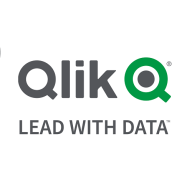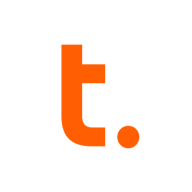

Teradata and Qlik Replicate are top performers in the analytics and data integration categories. Teradata leads in advanced analytics and performance for high data volumes, while Qlik Replicate excels with real-time data integration and cost-effectiveness.
Features: Teradata offers query optimization, parallel processing, and columnar partitioning, making it suitable for traditional data warehousing. Qlik Replicate provides efficient data movement with minimal impact, focusing on real-time changes and ease of integration.
Room for Improvement: Teradata could improve pricing, cloud compatibility, and handling unstructured data. User-friendliness in managing unstructured data is also desired. Qlik Replicate could enhance error messaging, support, and interface usability for managing multiple data destinations.
Ease of Deployment and Customer Service: Teradata provides a stable on-premises and cloud deployment but faces mixed reviews on customer support speed. Qlik Replicate is easy to set up, especially in hybrid settings, but occasionally has technical support delays.
Pricing and ROI: Teradata is seen as a premium option with high performance for large enterprises, offering substantial ROI in data capability but at a higher cost. Qlik Replicate is more affordable and cost-effective per endpoint, though expenses rise with more data sources.
I conducted a cost comparison with the AWS service provider, and this option is much cheaper than the Kinesis service offered by AWS.
Even priority tickets, which should be resolved in minutes, can take days.
The technical support from Teradata is quite advanced.
Customer support is very good, rated eight out of ten under our essential agreement.
This expansion can occur without incurring downtime or taking systems offline.
Scalability is complex as you need to purchase a license and coordinate with Teradata for additional disk space and CPU.
I find the stability to be almost a ten out of ten.
The workload management and software maturity provide a reliable system.
It is a core-based licensing, which, especially in the banking industry, results in the system capacity being utilized up to a maximum of 60%.
Unlike SQL and Oracle, which have in-built replication capabilities, we don't have similar functionality with Teradata.
Licensing is calculated based on the machine's total capacity rather than actual usage.
Initially, it may seem expensive compared to similar cloud databases, however, it offers significant value in performance, stability, and overall output once in use.
Teradata is much more expensive than SQL, which is well-performed and cheaper.
Data retrieved from the system can be pushed to multiple places, supporting various divisions such as marketing, loans, and others.
The data mover is valuable over the last two years as it allows us to achieve data replication to our disaster recovery systems.


Qlik Replicate is a data replication solution for replicating data from one source database to another for business intelligence software. It offers data manipulation and transformations, replication without impacting source databases, and ease of use without needing ETL. The solution is stable and user-friendly, with detailed logging and support.
Qlik Replicate has improved the organization by allowing each team to replicate their data into a single-source data location. The most important feature of Qlik Replicate is its ability to replicate and update records without needing a programmer.
Teradata is a scalable data analytics platform designed to meet enterprise demands for large-scale data management and processing, focusing on performance, scalability, and security for complex query executions.
As a leading data warehousing solution, Teradata integrates advanced analytics enabling organizations to derive insights from massive datasets. It supports high-volume data workloads with its architecture optimized for analytical queries. Users benefit from its robust scalability, allowing seamless expansion as data grows. Teradata's SQL engine is compatible with a wide range of data types, ensuring flexibility in data analysis. With advanced security measures, it protects sensitive data across various environments, providing peace of mind to users handling critical information.
What are the most important features of Teradata?Teradata is widely used in industries like finance, telecommunications, and healthcare, where data-driven decisions are critical. Companies leverage its robust analytics capabilities to enhance customer experiences, streamline operations, and ensure compliance with regulatory requirements. In these sectors, quick access to data insights can significantly impact competitive advantage.
We monitor all Data Integration reviews to prevent fraudulent reviews and keep review quality high. We do not post reviews by company employees or direct competitors. We validate each review for authenticity via cross-reference with LinkedIn, and personal follow-up with the reviewer when necessary.